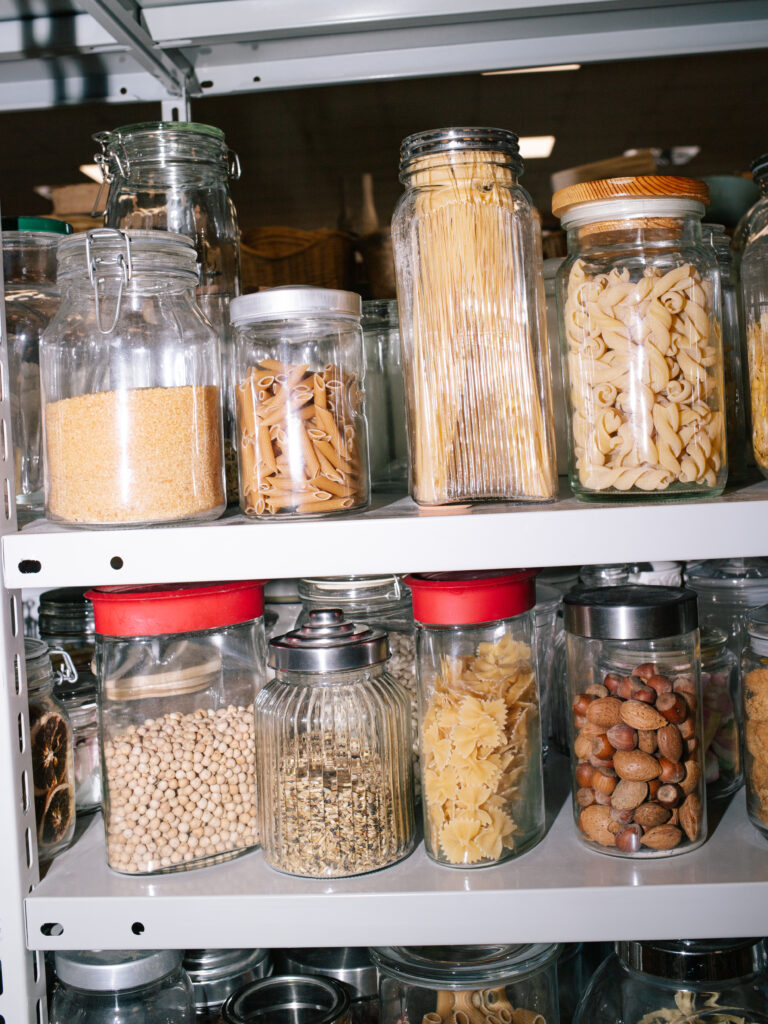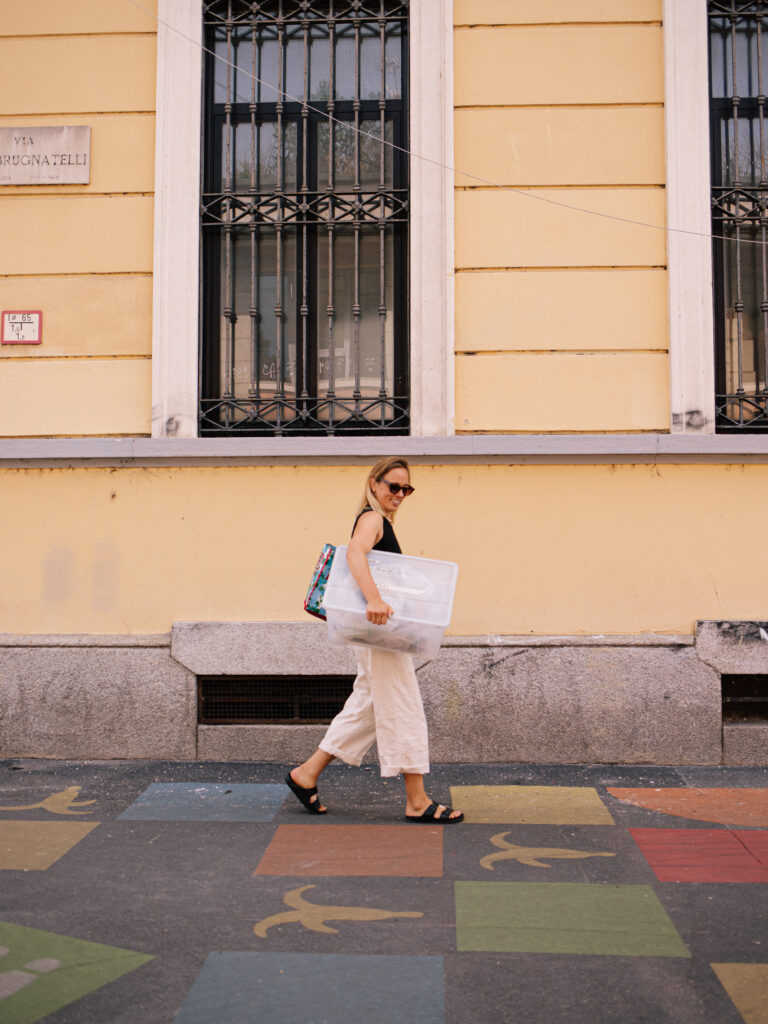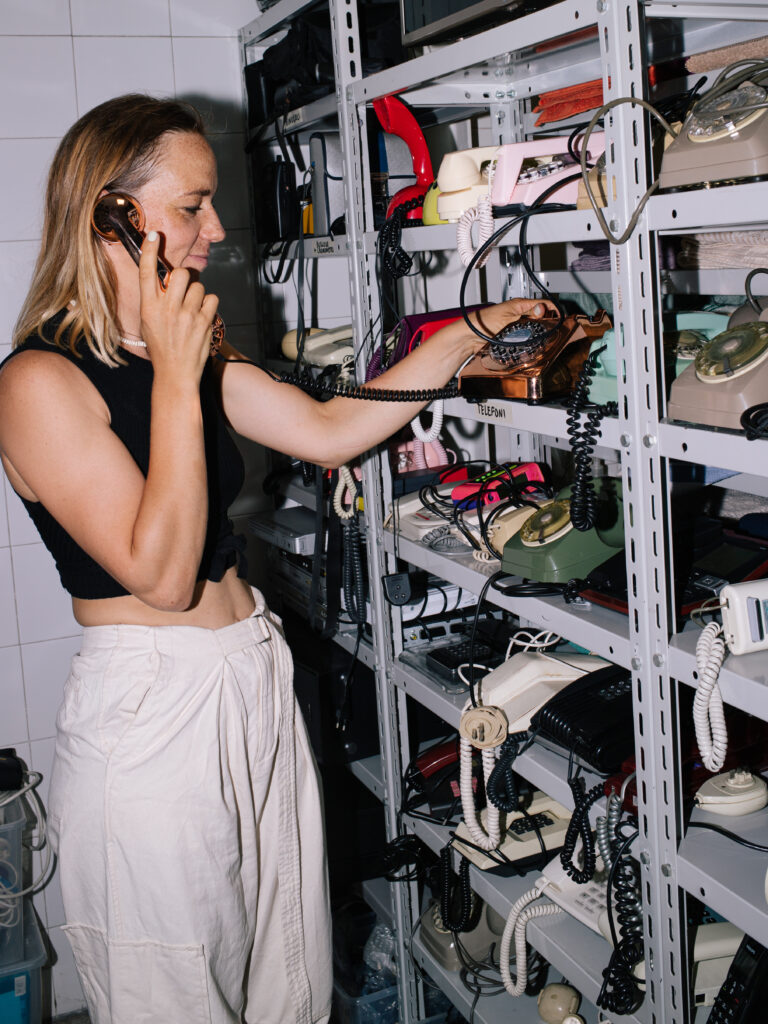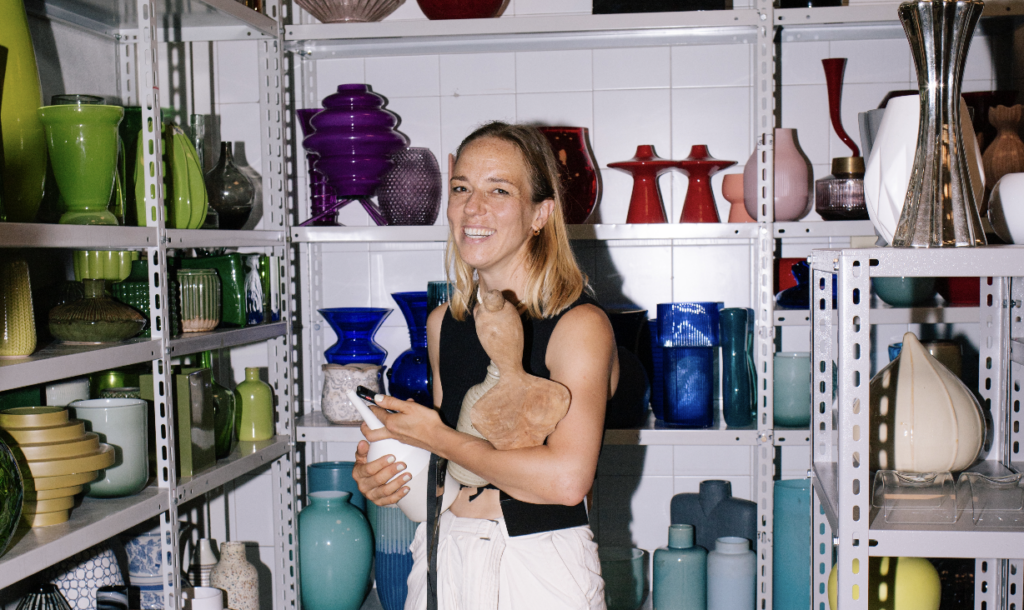Kadri Hirvesaar, an Estonian set designer based in Milan, Italy’s fashion capital, collaborates with renowned brands and figures like Stanley Tucci, Auricchio, Pasta Garofalo, and Armani; Alina Birjuk caught up with her to discuss her life and work in her vibrant, creative Milanese home.
How did you discover Italy?
I was originally studying architecture at the Estonian Academy of Arts and wanted to do an Erasmus exchange, so I chose Milan by chance. I wanted to go further away so I wouldn’t have to come home every weekend, and I found an interesting school in Milan.
In the meantime, I changed my major to product service system design because there were more courses in English.
What was the Estonian Academy of Arts like?
A lot of creativity through drawing and painting, which broadens your thinking. A great experience in teamwork, especially as there were relatively few of us on the course, so the teacher could work with each of us individually. Also a lot of experience in conceptual thinking.

How has moving to Italy affected your career?
It’s not easy to find work here, especially when you’re young and a foreigner, but I was very lucky because within a few weeks of arriving I found a photo studio where I could apply my knowledge.
It’s important to have a good portfolio, but if nobody knows you and you don’t have any contacts, it’s quite difficult to establish yourself in the city. This industry, especially advertising and commercial photography, operates on a completely different scale than in Estonia.
What made you want to move abroad?
I’ve always been interested in making temporary installations. I couldn’t imagine that it could become a job, but coming here made me realise that it is possible. I wanted to give myself the opportunity to see how far I could go and challenge myself.
The creative landscape here offers so many more challenges and opportunities. I’ve been working here for ten years now and I still feel there’s a lot of room for growth. There are a lot of people in this field here and there’s a lot of work.
Do you meet other Estonians in your work?
I once ended up at a photo shoot for the Gucci children’s collection a few years ago. I was invited by an acquaintance and there was an Estonian photographer, Katrina Tang, shooting the children’s campaign at the same time. It was so cool to see another Estonian on the set by chance.
She even joked that it’s amazing to be working on such a big production and to have three assistants here, whereas in Estonia you sometimes have to carry all the tripods and equipment by yourself.

How have you managed to stand out?
It depends on your work. Sometimes people call you because they’ve seen your portfolio, but often it’s through introductions. If you do good work, the same clients or employers will invite you back or recommend you.
What is the work you’re most proud of?
Some of the work we did in the photo studio agency was quite interesting. For example, we needed a sunflower field, so we bought a bunch of sunflowers and had to create it. Because there were no sunflower fields at that time of the year.
The other time we made a 4×4 metre wall out of grape bunches, which seemed ridiculously large and sometimes you wonder why you need it, but it’s fun!
Another thing I really enjoy is photographing furniture, coming from an interior design background. That’s the direction I’d like to go in.
What have you learned from working in Milan?
One thing I’ve learnt is that everything has to be possible. If something is requested, you can’t say no. For example, we recently did a shoot for an American brand in the French mountains, and it was 25 degrees Celsius in September, so we had to cover a small house with artificial snow.
We had specially ordered artificial snow from a company in London.
The budget for such a campaign is around €100,000. Thousands of items were also hired and transported. It’s one of the coolest and biggest projects and it’s amazing to see how you can completely transform any location into another world. I have to admit that sometimes it feels like a bit of a waste, but at the same time it’s so cool to see how you can completely change a place without changing the environment.
What’s important on set to make sure everything goes smoothly?
The team is definitely crucial. I often work closely with my flatmate. Good communication and a strong relationship with the producer and photographer are also essential, so you can work in peace.
Some clients want to approve every little step and order, which often means I have to send pictures of every little detail for approval. This can be time consuming. Organisation and thorough preparation are also essential. The photographer also needs to be skilled, so they don’t spend hours on a single shot.

Can you tell us a bit more about your project, Chromiogals.com?
A few years ago my friend had a catering company and she invited me to be involved in the design aspect. When it comes to catering, it’s a 360-degree approach, looking at how the presentation looks, how the food itself looks, and what the servers wear.
We talk about the brand through the food, the values and how they can be conveyed through the food, while aligning with the identity. For some events we’ve even set up pop-up cafes. Sometimes food presentations can turn into a show. We try to think about every detail.
Do you see yourself working in Estonia one day?
I would love to, but I haven’t had the time to pursue it recently. It doesn’t even have to be commercial work; I’d also like to do set design for films or music videos.
Is Estonia still home?
Estonia is and always will be my home. I’ve been away for just over ten years, and I always think that the work I do here would be much easier to do in Estonia.
Even though I have many contacts in Italy, everything is much easier and more reliable in Estonia. For example, I still go to the dentist in Estonia, and I do a lot of bureaucratic things through Estonia because it’s much easier and safer.

And if someone asked you to describe Estonia, how would you do it?
Estonia is actually quite well known, but sometimes people still ask if it’s a country, even though they generally know where it is. People often ask if the capital of Estonia is Riga, ha-ha.
I always say what I think about Estonia: young people live very well; they tend to start families early and have a quieter lifestyle. At the weekends, people often go to their summer cottages or to the forest.
Somehow, I feel that there’s less enthusiasm for outdoor activities in Italy compared to Estonia. Estonia is small and charming, and people live well and peacefully.
Do you see yourself returning to Estonia?
I often think about it. One thing that has always held me back is that if I went back to Estonia, I would feel that life in Italy was slipping away.
On the other hand, when I’m in Italy, I feel like I’m experiencing both countries. Although I’m in Italy most of the time, I still feel a strong connection to Estonia and visit it often. I always imagine that when I’m old, I’ll definitely be in Estonia.

What would you wish for Estonia in the next hundred years?
I think that Estonia is moving in the right direction. I’m not worried about Estonia and it seems that young Estonians are very entrepreneurial and smart. There’s a strong desire to do things in Estonia, especially among young people, and they are the future of Estonia. I hope that this momentum will continue in the same direction.
What brings you joy on a daily basis?
I find joy in routine, probably because there isn’t much routine in my work. Starting the morning calmly, enjoying breakfast, working and meeting friends for dinner.
Sometimes just an ordinary day, walking the dog in the park – and if the sun is out, it makes the day so much brighter.

